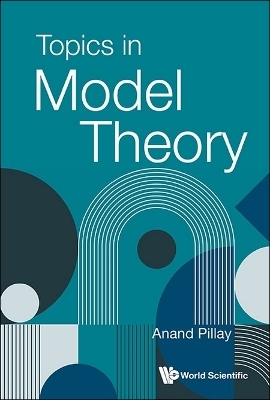
Essays on the Extended Evolutionary Synthesis
Springer International Publishing (Verlag)
978-3-031-29878-3 (ISBN)
lt;p>Rodrick Wallace is a research scientist in the Division of Epidemiology at the New York State Psychiatric Institute, affiliated with Columbia University's Department of Psychiatry. He has an undergraduate degree in mathematics and a PhD in physics from Columbia, and completed postdoctoral training in the epidemiology of mental disorders at Rutgers. He worked as a public interest lobbyist, including two decades conducting empirical studies of fire service deployment, and subsequently received an Investigator Award in Health Policy Research from the Robert Wood Johnson Foundation. In addition to material on public health and public policy, he has published peer reviewed studies modeling evolutionary process and heterodox economics, as well as many quantitative analyses of institutional and machine cognition. He publishes in the military science literature, and in 2019 received one of the UK MoD RUSI Trench Gascoigne Essay Awards.
1 On the majortransitions.- 1.1 Introduction.- 1.2 Symmetry and symmetry-breaking.- 1.3 Resources.- 1.4 Cognition in non ergodic systems.- 1.5 Theprebiotic`bigbang'.- 1.6 Biological`recombination transparency'.- 1.7 A simple application.- 1.8 Specialization and cooperation: multiple workspaces.- 1.9 Discussion.- 1.10 Mathematical Appendix.- 1.11 References.- 2 On the Extended Evolutionary Synthesis.- 2.1 Introduction.- 2.2 First notions.- 2.3 The basic theory.- 2.4 Examples.- 2.5 More theory:selection pressureas shadowprice.- 2.6 Extending the models.- 2.7 Discussion.- 2.8 Mathematical Appendix.- 2.9 References.- 3O On regulation.- 3.1 Introduction.- 3.2 Theory.- 3.3 Applications.- 3.4 Discussion.- 3.5 Mathematical Appendix.- 3.6 References.- 4 Punctuated regulation as an evolutionary mechanism.- 4.1 Introduction.- 4.2 Fisher Zeros reconsidered.- 4.3 Extinction I:Simple noise-induced transitions.- 4.4 Extinction II: More complicatednoise-induced transitions.- 4.5 Extinction III: Environmental shadow price.- 4.6 Discussion.- 4.7 Mathematical Appendix.- 4.8 References.- 5 Institutional dynamics under selection pressure and uncertainty.- 5.1 Introduction.- 5.2 A Rate Distortion Theorem model of control.- 5.3 Selection pressure dynamics.- 5.4 Destabilization by delay.- 5.5 Extending the Data Rate Theorem.- 5.6 Moving on.- 5.7 Reconsideringcognition/textit{AnSich.- 5.8 Changingtheviewpoint.- 5.9 Discussion.- 5. References.- 6O n`Speciation':Fragmentsizeininformationsystemphasetransitions.- 6.1 Introduction.- 6.2`Simple'phasetransition.- 6.3 Phasetransitionsinnetworksofinformation-exchangemodules.- 6.4 Discussion.- 6.5 MathematicalAppendix:`Biological'renormalizations.- 6.6 References.- 7 Adaptingcognitionmodelstobiomolecularcondensatedynamics.- 7.1 Introduction.- 7.2 Resources.- 7.3 Cognition.- 7.4 PhasetransitionsI:Fisherzeros.- 7.5 Cognitive`reactionrate'.- 7.6 PhasetransitionsII:Signaltransductionandnoise.- 7.7 Discussion.- 7.8 MathematicalAppendix:Groupoids.- 7.9 References.- 8 EvolutionaryExaptation:Sharedinterbrainactivityinsocialcommunication.- 8.1 Introduction.- 8.2 Correlation.- 8.3 Cognition.- 8.4 Dynamics.- 8.5 Cognitionrate.- 8.6 Anexample.- 8.7 Cooperation:Multipleworkspaces.- 8.8 Networktopologyisimportant.- 8.9 Timeandresourceconstraintsareimportant.- 8.10 Furthertheoreticaldevelopment.- 8.11 Discussion.- 8.12 MathematicalAppendix.- 8.13 References.- 9 Afterward.
| Erscheinungsdatum | 20.05.2023 |
|---|---|
| Reihe/Serie | SpringerBriefs in Evolutionary Biology |
| Zusatzinfo | XX, 162 p. 40 illus. |
| Verlagsort | Cham |
| Sprache | englisch |
| Maße | 155 x 235 mm |
| Gewicht | 290 g |
| Themenwelt | Geisteswissenschaften ► Psychologie |
| Mathematik / Informatik ► Mathematik ► Logik / Mengenlehre | |
| Naturwissenschaften ► Biologie ► Evolution | |
| Schlagworte | Evolution of cognition • Extended evolutionary synthesis • Groupoid • Information Theory |
| ISBN-10 | 3-031-29878-0 / 3031298780 |
| ISBN-13 | 978-3-031-29878-3 / 9783031298783 |
| Zustand | Neuware |
| Informationen gemäß Produktsicherheitsverordnung (GPSR) | |
| Haben Sie eine Frage zum Produkt? |
aus dem Bereich


